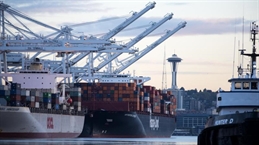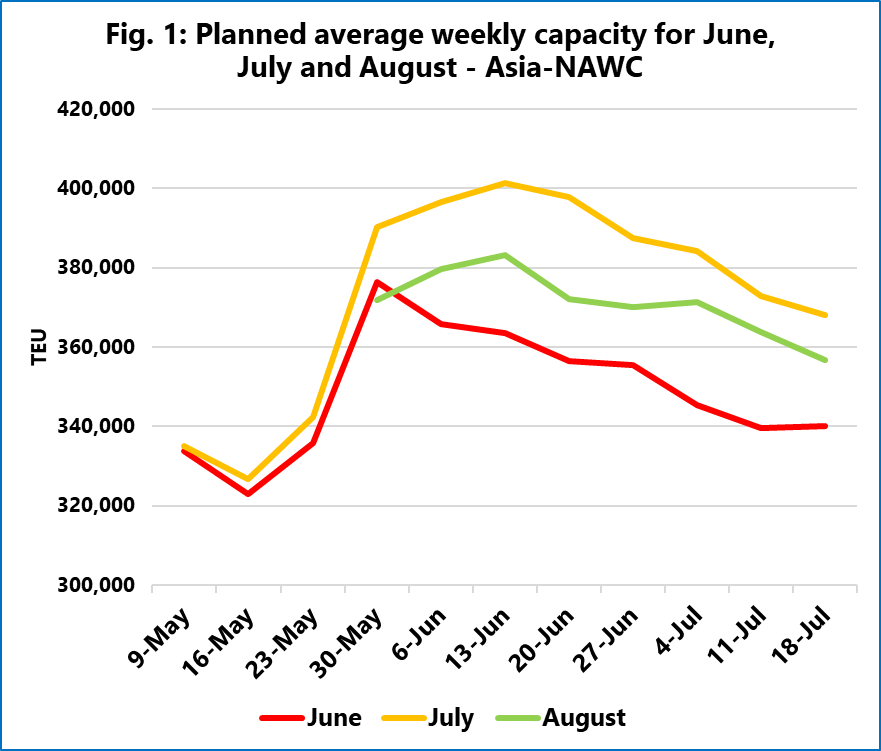
In response, it said that shipping lines planned significant capacity injections to meet the increased demand. However, continued regulatory uncertainty caused US importers to pull back from their initial optimism.
"The latest data from Sea-Intelligence's Trade Capacity Outlook (TCO) database now shows a clear reversal in the capacity deployment planned by the shipping lines," Sea-Intelligence said.

[Source: Sea-Intelligence]
Citing results (shown in Figure 1), the maritime consultant said this illustrates "how shipping lines' capacity plans evolved since early May on Asia-North America West Coast."
"In late May, the planned average weekly capacity for the month of June was increased by 43,000 TEU/week in just 3 weeks, but by the end of June, the actual deployment was close to what was planned before the tariff-pause was announced," commented Alan Murphy, CEO, Sea-Intelligence.
He noted that for the month of July, a significant surge was planned at the end of May, but this has been trending down in recent weeks, as shipping lines have cancelled sailings.
Murphy said the initially optimistic plans made for August are also seeing a clear reduction in the most recent data.
"The data tells a clear story: the shipping lines initially moved to inject capacity, in the belief of a sustained demand surge," the Sea-Intelligence chief said.
"That surge has since fizzled out, and shipping lines are now adjusting their planned deployments back down to match the reality of the demand. For the Asia-North America West Coast trade, capacity plans are now effectively back to square one."



